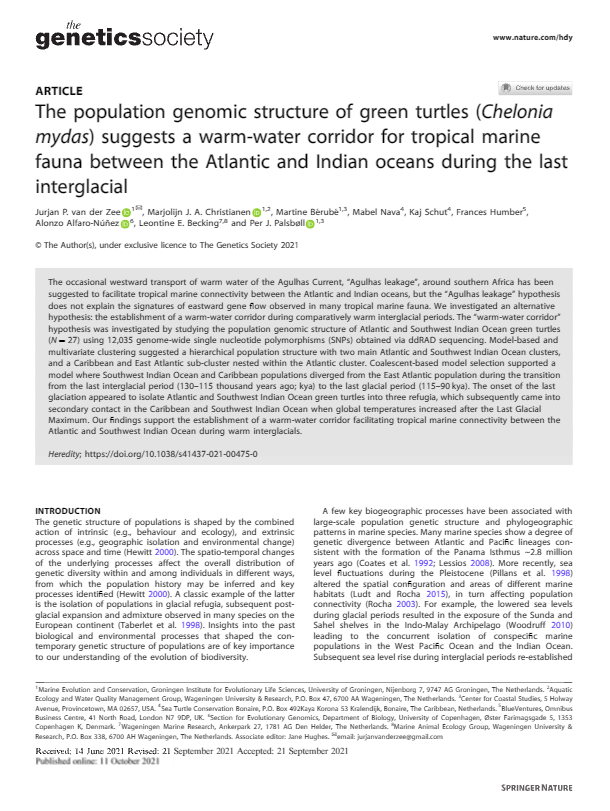The occasional westward transport of warm water of the Agulhas Current, “Agulhas leakage”, around southern Africa has been suggested to facilitate tropical marine connectivity between the Atlantic and Indian oceans, but the “Agulhas leakage” hypothesis does not explain the signatures of eastward gene flow observed in many tropical marine fauna. We investigated an alternative hypothesis: the establishment of a warm-water corridor during comparatively warm interglacial periods. The “warm-water corridor” hypothesis was investigated by studying the population genomic structure of Atlantic and Southwest Indian Ocean green turtles (N = 27) using 12,035 genome-wide single nucleotide polymorphisms (SNPs) obtained via ddRAD sequencing. Model-based and multivariate clustering suggested a hierarchical population structure with two main Atlantic and Southwest Indian Ocean clusters, and a Caribbean and East Atlantic sub-cluster nested within the Atlantic cluster. Coalescent-based model selection supported a model where Southwest Indian Ocean and Caribbean populations diverged from the East Atlantic population during the transition from the last interglacial period (130–115 thousand years ago; kya) to the last glacial period (115–90 kya). The onset of the last glaciation appeared to isolate Atlantic and Southwest Indian Ocean green turtles into three refugia, which subsequently came into secondary contact in the Caribbean and Southwest Indian Ocean when global temperatures increased after the Last Glacial Maximum. Our findings support the establishment of a warm-water corridor facilitating tropical marine connectivity between the Atlantic and Southwest Indian Ocean during warm interglacials.
Publications
The population genomic structure of green turtles (Chelonia mydas) suggests a warm-water corridor for tropical marine fauna between the Atlantic and Indian oceans during the last interglacial
Share this:
Facebook
Twitter
LinkedIn
WhatsApp
Email
Related publications
Join a global movement

















